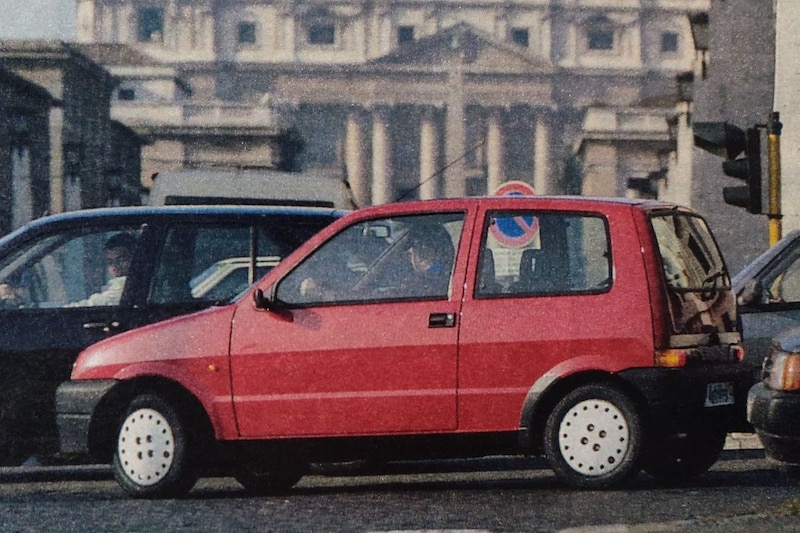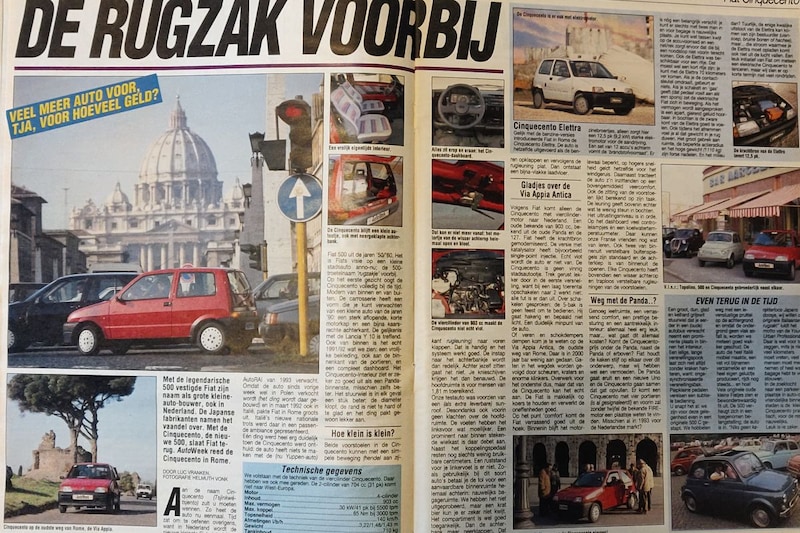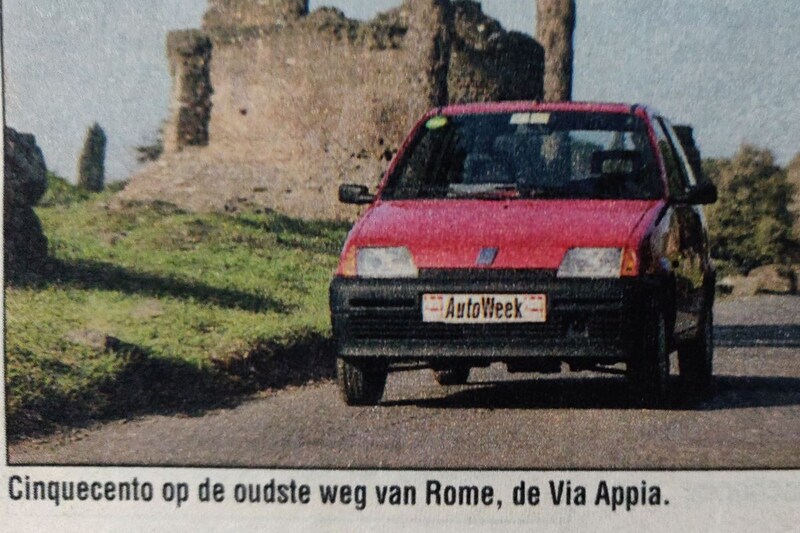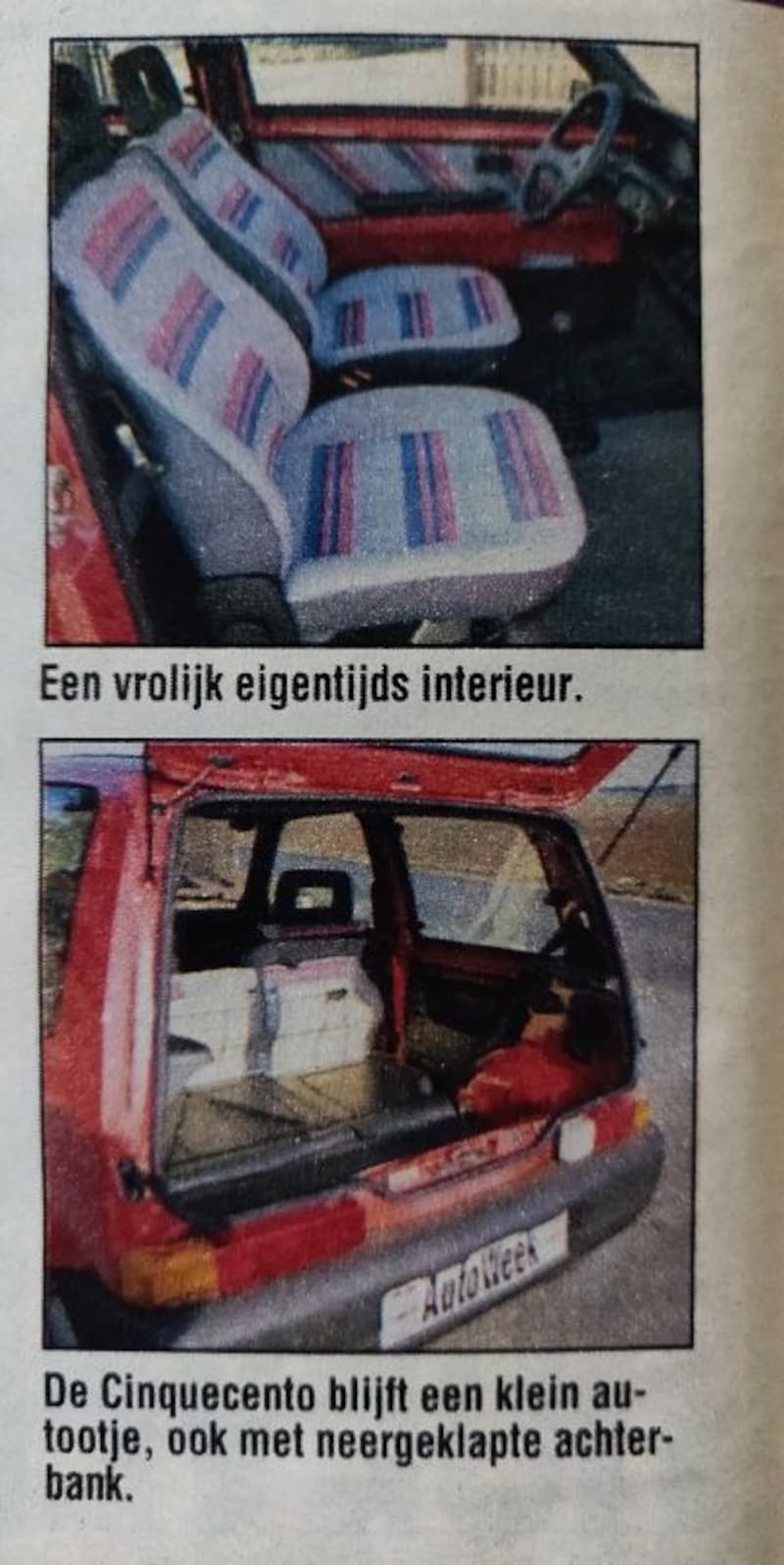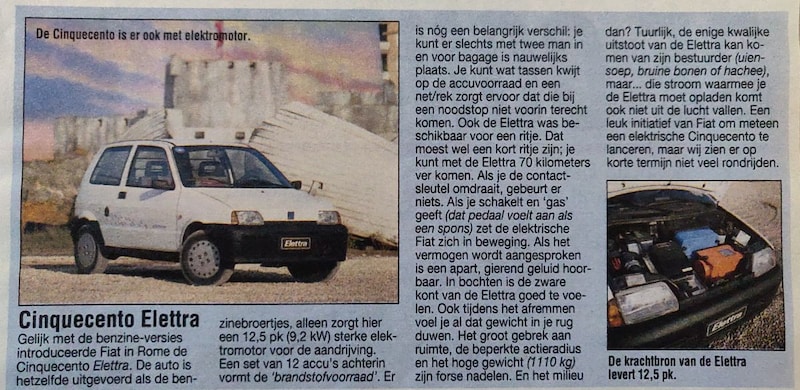The Fiat 500 was one of the most important (if not the most important) cars that Italy ever produced. Quite big shoes to fill. Fiat made a very successful attempt with the Cinquecento. Thirty years ago we were introduced to the new little one.
Where the Fiat 126 was still a clear descendant of the 500, the 126 successor Panda went more of its own way. In 1991 the Panda lasted for 11 years and despite the fact that the Panda was still popular, Fiat decided it was time to create a more contemporary and also smaller city car. A car more in the spirit of the 500. It was not for nothing that the Italians called it Cinquecento, Italian for 500. It was not a retro 500 as we got it in 2007, but a really modern take on simple yet practical and comfortable city transport.
Although the Cinquecento was not launched on a large scale until 1992, AutoWeek was able to drive it just before the start of that year. After all, the first copies just rolled off the line in 1991. Where better to test such a small Fiat than in the capital of Italy? Where you once saw more primeval 500s than anywhere else. In the busy traffic of Rome it was hard work behind the wheel and you could also take a nice bad road here and there to put the chassis to the test. The historic ‘Via Appia’, for example.
Contemporary
The first impression of the Cinquecento when we first came face to face with it was good, although that was mainly a matter of taste. We thought the Cinquecento looked modern both outside and inside. Contemporary especially. Where the 500 was really a happy ball, the Cinquecento almost seemed drawn with a ruler. Minimalism was largely rampant in the interior, although it looked a bit busier than in the Panda, which is now quite aging. The different layers in which the climate controls were housed were almost reminiscent of how it was set up in big brother Tipo. This made a complete impression. We also found the cheerful colors on the seat and door upholstery to be a modern plus at the time.
What stood out even more positively was the headroom, even with the optional sunroof in it. As an adult you could sit fine and in the back it was not against its size. You should not expect much from the luggage space, although the rear seat could be folded away if you wanted to take some more with you. Also a pity was the fact that the wheel arch took up quite a bit of space at your legs and so you didn’t really have a resting place for your left leg. In addition, the pedals were a little further to the right than you would expect, although that was mainly a matter of getting used to.
good chassis
Once on the road with the Cinquecento, there was a smile. The suspension comfort was quite decent, even on the Via Appia, which was still built by the Romans and has barely been tackled since. The Italians did that well. The Cinquecento was also quite easy to keep on track when things got a bit rougher. Still, there was something that didn’t feel quite refined: the gearbox. You had to approach it with quite a bit of conviction and it did its job hakerig. Moreover, you did not want to upshift too quickly at low gears, because then the Cinquecento would lose its zest for life. We drove with the 903 cc four-cylinder in the nose, a block that was not overly noisy but did its job with a slight breathlessness. We were already hoping for the better Fire engine to come, and luckily that (a 1.1) eventually came.
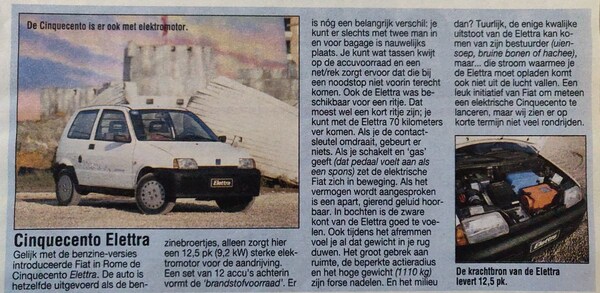
There was also an electric Fiat Cinquecento, the Elettra!
What didn’t happen
All in all, we could say that Fiat had put down a potential success story, although it was true that there were still some rough edges. In any case, the Panda would have a hard time with this newcomer next to him, we expected. That is why we are committed to the Panda having to leave the field not much later and the Cinquecento to man the low segments together with the Uno. That turned out differently, because the Panda turned out to be only halfway through its lifespan. It was not until 2003 that the curtain fell for the first generation Panda. What also did not materialize was the expectation that there would also be a ‘four-door’ Cinquecento. The term five-door seems to fit us better, but that aside. Even though we claimed that prototypes had already been spotted with two extra doors, such a Cinquecento never came. We had, however, clearly seen that Fiat had put down a promising stunner. No fewer than 1.16 million Cinquecentos saw the light of day and just under 30,000 were sold in the Netherlands.
– Thanks for information from Autoweek.nl
